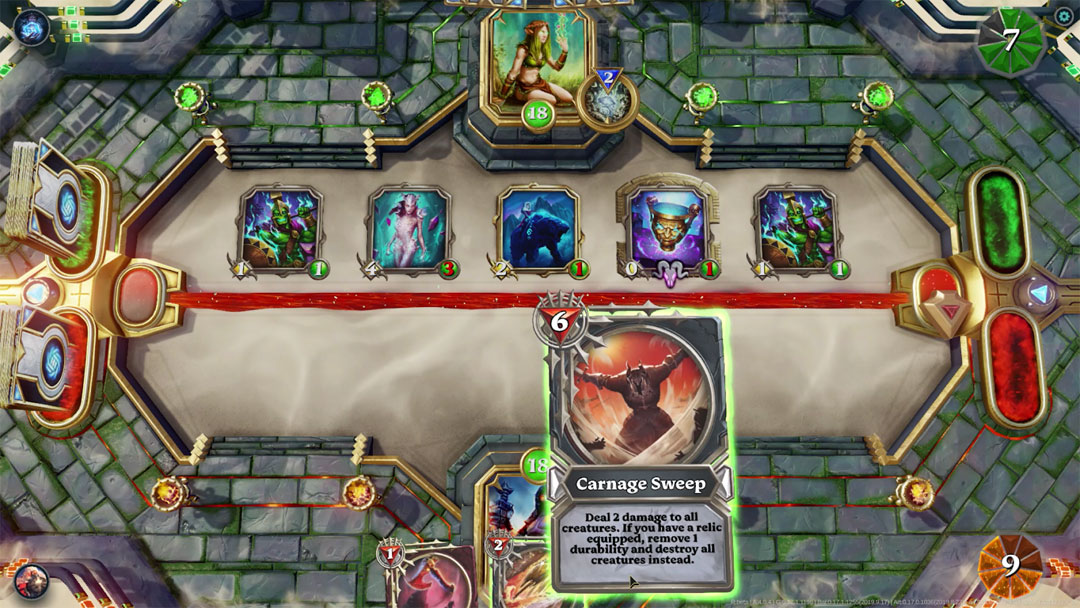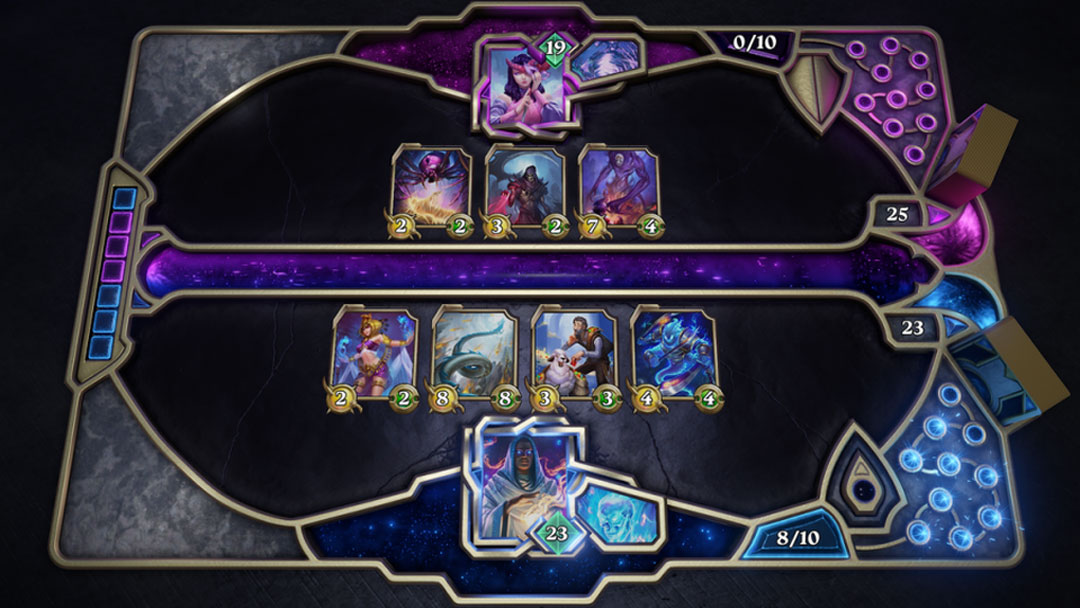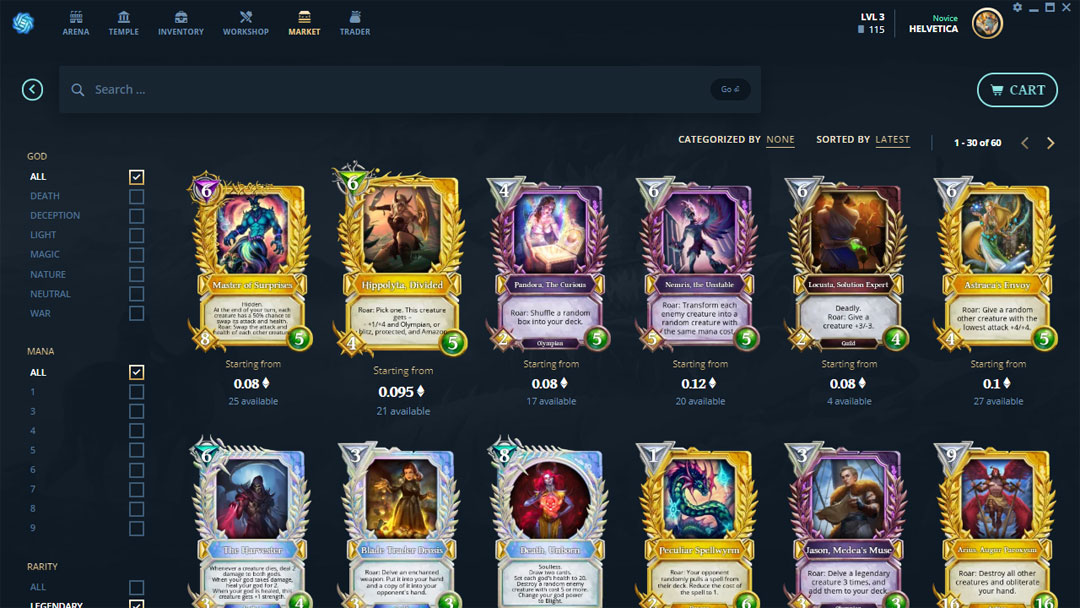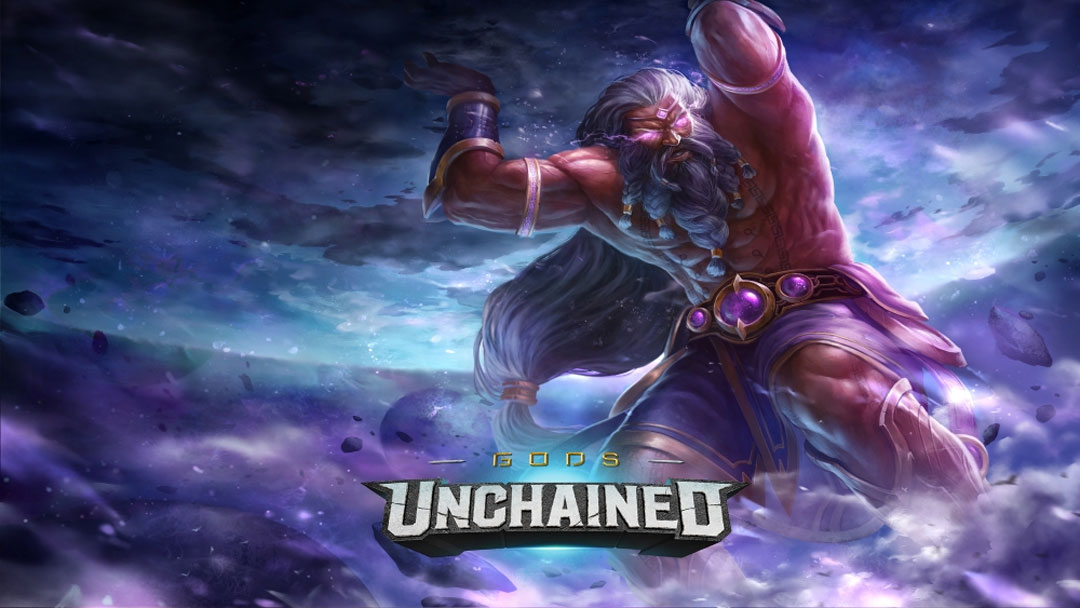The Gods Unchained free-to-play digital card trading game built with blockchain technology has been in beta since July and since has released its first tradable set of cards.
Developed and published by Immutable, formerly Fuel Games, built the game on the Ethereum blockchain and provides a mechanism for trustlessly trading cards using the ERC-271 standard.
In this way, players of the game have actual, provable ownership of tradable cards, unlike other trading card games on the market where the virtual cards are instead licensed virtual assets that exist only on the whim of the game platform.
“In almost every game, players are buying items, cards, skins and upgrades which they don’t truly own. Blockchain actually gives players digital-asset ownership, with the same property rights you can find in the real world,” said Robbie Ferguson, co-founder and president of Gods Unchained. “With Gods Unchained, we’ve captured the allure of traditional print card collectibles like Magic, married them with appealing visuals of digital games like Hearthstone, and added true ownership through the Ethereum blockchain.”
The Gods Unchained blockchain game is currently in a balancing beta phase where currently released core cards and Genesis Cards, the first tradable set of cards released, are having their stats and mechanics tweaked. After the balance phase ends the current set of cards will be discontinued and a new set will be released.
Below, we will review the gameplay, mechanics, and graphics as well as discuss the use of blockchain technology to create player-owned virtual assets.
Decks: Gods Unchained is a basic TCG with heroes and matchmaking
Upon entering their first game, players already familiar with tradable card games, such as Blizzard Inc.’s Hearthstone will find instant familiarity. The interface is clean, simple, easy to understand and it’s easy to use cards and follow how they operate.
Before the first game, the launcher client acts as a sort of holding space to allow players to open packs, build decks and select gameplay modes. Here players select their God, which is a hero character who plays the cards in an actual match, each God has their choice of three different Ultimate Powers, which are single-use deployable powers with strong gameplay effects.
Decks are made up of cards, which can be built from those the player has on hand. Core cards are gained from leveling up and seasonal cards can be obtained by buying packs from Immutable for Ethereum currency.
Players can play against an AI player at their own pace to get used to the game. Game modes include “Constructed,” which allows players to play against each other with matchmaking and timed events, which can include “Ranked Constructed” and even “Random Deck.” Other game modes also exist, but they appear to be periodic – some that are connected with tournaments held by the Immutable team.
For certain modes, players will be able to select God, deck, game board and eventually trinkets.
All modes will eventually feature Quests, which appear to be periodic “do this” and “do that” style goals that will reward players for completing objectives. They are not implemented yet, but all game modes have at least three slots for them.
Although cards are gained through gameplay and buying packs, the Immutable team has also mentioned the intention of including a mechanic called Evolution that will allow players to create new cards by destroying old ones.

Gameplay: Turn-based card playing with attackers, defenders and spells
After launching a game through the Immutable Gods Unchained game launcher the game arena is loaded and the player is pitted against an AI or another player. The arena is made up of two sides, like every other TCG and the player receives a hand from their deck. The game then operates in a turn-based fashion from then on.
When creatures die or are discarded, they are placed into a discard pile called the Void. There are ways to destroy cards without placing them in the Void by means of a mechanic called “Obliterated.” Cards can be returned from the Void by some creatures and spells, but Obliterated cards are out of the game for the duration.
Both Gods start with 30 life and the objective is to lower the enemy God’s life to zero through creature attacks and spells.
Each turn Gods receive an ever-increasing mana pool that starts at one (but can be enhanced by spells for turn duration). Each turn the mana gem pool increases – the first five unlock during the first five turns but starting at mana gem six it takes more turns to unlock a new one. This means the player can only summon low-cost creatures in the beginning but as the game wears on the player gains access to higher and higher cost creatures (or multiple creatures and spells at once). It also means that late game is staggered and doesn’t hit the cap as quickly.
This differentiates Gods Unchained from Hearthstone, which operates by increasing the mana pool by one until the cap is reached. With this staggered mana pool design, the Immutable team believes that Gods Unchained card duels will have more opportunities and “big bomb” combos will be more meaningful when approaching late-game and the match won’t hit its peak too quickly when mana lock-in happens.
Creatures have three stats: Mana cost, Attack power, and Health.
Upon attacking, creatures inflict their Attack power as damage against their target, which is done by dragging the card to the target. The target can be an enemy God or enemy creature. If the God or creature has Attack power that also does damage to the attacker. When a creature’s health goes to zero, it dies.
Cards themselves can have a set of abilities that are marked by keywords. These abilities can include Frontline, which means that creature must be attacked first before others, and Flank, which enables creatures to ignore Frontline as if they’re not the first attackers that turn. Other abilities include Blitz that allows a creature to attack right after it is summoned; Roar, which triggers upon summoning; and Afterlife, which triggers when a creature is killed.
Gods can also summon cards called Relics, these are weapons that the God can equip that gives them the ability to attack, thus giving them Attack power. Relics come with durability, which is the number of times it can be used before it breaks.
Combinations of spells, creatures, and relics in the player’s deck determined by the luck of their draws help determine the outcome of the game. However, some skill is also involved in deciding how to deploy the cards available in the player’s hand and many cards synergize with others (sometimes even those in the opponent’s field).
Also, interesting. Just like Hearthstone, players are unable to chat with each other during matches. The only thing that passes between players is turn-based moves.

Graphics and audio: Gods Unchained is graphically stunning with a good, clean user interface
Gods Unchained does a very good job of providing a clear, easy to understand user interface with wonderful artwork and animations. Depending on the game field, there will be animations around the edges and the center as well that are subtle but interesting to look at.
The cards themselves don’t have many animations, except when they are placed (where they thud down on the field or materialize) when they are used to attack and when they die. However, there are some animations attached to cards that provide a clear indication of status.
For example, asleep cards that cannot attack have “Z Z Z” floating up from them and confused cards will have twirling stars. These animated indicators help the player quickly understand the battlefield at a glance.
The audio in this game is actually quite pleasant to the ear. First, the music played on most boards is atmospheric and understated, often using strings and other instrumentals in order to convey a sense of activity – it is not overwhelming and somewhat pleasant. Although it can swell in volume and drift into quiet intermittently.
The sound design surrounding the cards provides a subtle user interface response. When moving and interacting with cards there will be a flick sound, attacks produce a smash or slam sound. Some cards speak aloud when they are added to the hand or the battlefield and there are numerous little sounds created by card interactions that add an extra layer to the gameplay.
The sound design is so distinct in some cases that it is possible to tell what’s happening in a game just by listening to the audio events.
These elements together, the nice-looking graphics, good art on the cards and the subtle animations on the field combined with the audio design and its effect on the presentation make the game a joy to play. If Gods Unchained continues with this animation and audio direction it will probably remain top tier when it comes to enjoyment.

Blockchain: Tradable cards in Gods Unchained can be “activated” and turned into tokens
Tradable cards in Gods Unchained will be able to be exchanged between players (and non-players) trustlessly using the Ethereum blockchain.
When new cards are introduced to the game, trading will be initially disabled during a balancing period so that the Immutable team can get the cards into line with how the rest of the game works.
The cards themselves are ERC-271 tokens, which makes them tradable on Ethereum, but first they must be “activated” via a process that transforms the cards into tokens. Using this protocol, it is possible to create provably rare cards, the basis of all successful tradable card games, with virtual assets tied to the individual cards.
The Immutable team also designed the cards to mimic those of successful physical TCGs such as Magic: The Gathering. To do this, cards come in four different rarities – Common, Rare, Epic, and Legendary – as well as four levels of shine, which is a cosmetic effect – Standard, Shadow, Gold, and Diamond.
The probability of each Rarity and Shine level is hardcoded into the smart contracts that generate cards and can be verified through the Ethereum blockchain. This fact provides a kind of provable scarcity for cards and their combinations of rarity and shine – for example, a Legendary Diamond card would be extremely rare and thus potentially considered quite valuable.
For more information on what the card ecosystem of Gods Unchained looks like right now, the website GodsUnchained.info provides statistics, rarest card lists, and a collection explorer.
Players can also market their own cards within the Gods Unchained marketplace – which is a UI element within the launcher itself. The Immutable team published their own preview of the marketplace (which is currently live) on their blog explaining the details mere days ago.
The tradability of cards on the Ethereum blockchain also opens up to numerous market ecosystems across the web. Currently, it is possible to exchange and buy cards on the OpenSea marketplace. The total volume exchanged at time of writing was 302.72 ETH (approximately $45,932) with an average price of 0.07 ETH per sale (approximately $10.62).
Hype for the game managed to reach such heights that the Genesis sale of cards for Gods Unchained raised 33,333 ETH at the end of October. That means Immutable raised money to the tune of approximately $62 million.
As for cards sold by players, Immutable also released four Mythic Rarity cards called Titans – Hyperion, Prometheus, Atlas, and Tethys – each of these cards are absolutely unique: there is only one. Immutable will release only for of these types of cards each year. After this year’s release, the Mythic Titan Hyperion sold at auction for $62,000.
“We’re leveling up the outdated practices of the gaming industry,” said Immutable Chief Executive James Ferguson. “Players hold immutable rights for the items they purchase or can earn in Gods Unchained, and thankfully the community that has cropped up and this accomplishment in itself proves people are excited.”
As the game of Gods Unchained gains audience and popularity, it will most likely see an increase in the volume of cards exchanged and used in the game, but it’s still at startup stages currently.
As for its use of blockchain technology. The use of ERC-271 tokens to create provable scarcity and actual player ownership of virtual assets, in this case virtual cards, makes a real marketplace where players need not worry about the whims of a platform clawing back virtual items from them.
In this way, Gods Unchained has tapped into a newly forming industry where virtual assets can represent real value in both entertainment through playing the game but also investment opportunities in that the cards themselves have rarity both in-game scarcity (Rarity) and “print style” scarcity (Shine).
Immutable has designed the pool of cards and the game to help give rise to an audience and a market that makes trading and holding the cards meaningful in both a gameplay sense (to use to build decks) and as collectibles.



Recent Comments